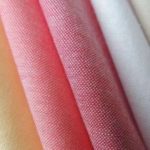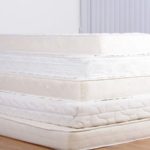Teak wood cutting boards are highly preferred by chefs worldwide, particularly in the US market, due to their artistic elegance and superior load-bearing capacity. So, what exactly is a teak wood cutting board? Let’s explore the advantages and disadvantages of this type of cutting board.
1 What is a teak wood cutting board?
 What is a teak wood cutting board?
What is a teak wood cutting board?
Teak wood cutting boards are made from Teak wood (also known as Tectona or Gia Ty wood). This type of wood comes from a deciduous tree with a grooved trunk and rough surface. Teak trees typically reach heights of 15 to 30 meters with a diameter of 60 to 80 centimeters.
The wood of the Teak tree is dark yellow, sometimes dark brown. The bark contains fibers, and the leaves have a heart-shaped shape with a length of 20 to 60 centimeters and a width of 20 to 40 centimeters. The leaf tips are pointed, while the leaf base has a glaze. The upper surface of the leaf is smooth, while the lower surface has a light yellow star-shaped fur layer. The leaf stalk is about 2.5 to 5 centimeters long and has a layer of fur.
2 Characteristics of teak wood
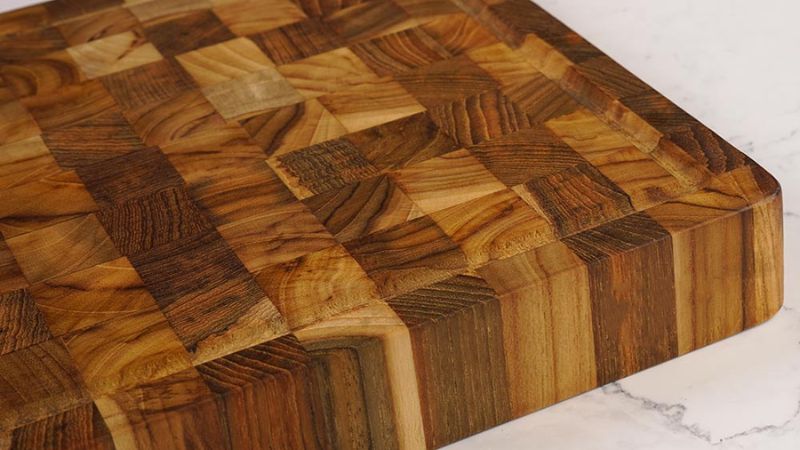 Characteristics of teak wood
Characteristics of teak wood
Teak wood has natural oil content that allows it to resist termites and insects, making it highly advantageous compared to other natural woods.
Teak wood is suitable for tropical climates, it thrives in sunlight and is less affected by cold temperatures. It also has good fire resistance and is less prone to pests.
Teak wood has a strong and smooth structure, with high load-bearing capacity and good flexibility. It has a low expansion coefficient, high stability, and minimal deformation. These qualities allow furniture made from teak wood to withstand harsh environmental changes.
Teak wood has a beautiful wood grain and a consistent color. It becomes even more lustrous when exposed to light over time.
3 Advantages of teak wood cutting boards
 Advantages of teak wood cutting boards
Advantages of teak wood cutting boards
- High durability, ensuring user safety.
- Non-toxic and safe for food preparation.
- Suitable for cutting meat and bones without fear of breakage.
- Easy to maintain and resistant to warping caused by weather changes.
4 Disadvantages of teak wood cutting boards
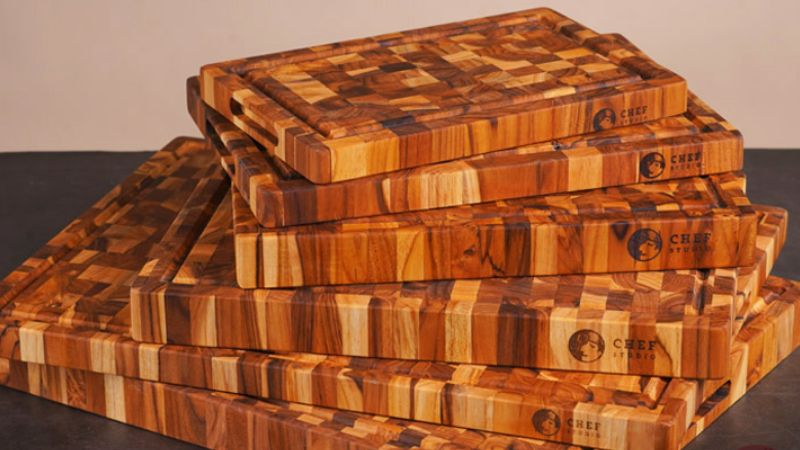 Disadvantages of teak wood cutting boards
Disadvantages of teak wood cutting boards
- Can absorb water and be prone to mold if not fully dried.
- Improper cleaning of meat can cause unpleasant odors.
- Prone to mold growth and food particles adhering to the surface.
5 How to use and maintain teak wood cutting boards
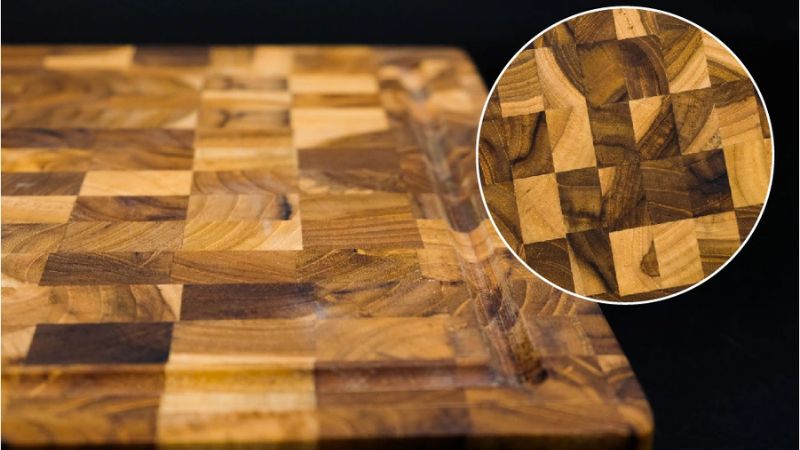 How to use and maintain teak wood cutting boards
How to use and maintain teak wood cutting boards
Usage:
It is recommended to use at least three different cutting boards: one for raw food, one for cooked food, and one dedicated to cutting and slicing fruits. This ensures food safety.
Cleaning:
After use, clean the cutting board with warm water. Avoid soaking the teak wood cutting board in water for extended periods of time. Do not use a dishwasher to clean the cutting board.
Storage:
After cleaning, dry the cutting board and apply a thin layer of oil to the surface for preservation. Store the cutting board in a dry and well-ventilated area.
Thanks to its resistance to termites and insects, teak wood cutting boards have become the favored choice for chefs worldwide, adding a touch of luxury to any kitchen space.
Exploring the Pros and Cons of Sleeping in an Air-Conditioned Room
Is sleeping with an air conditioner a good idea? As concerns over the adverse effects of air conditioning on our health increase, it’s important to understand the risks and rewards of using air conditioning while sleeping. Let’s examine the benefits and drawbacks of sleeping with an air conditioner, and the protective measures one should take.
Investigating the Advantages and Disadvantages of a Firm Cotton Mattress
If you’re searching for comfort and support during sleep, then cotton stuffed mattresses may be the perfect option for you! Learn more about these mattresses and their unique characteristics, along with their advantages and disadvantages. All cotton stuffed mattresses are made from 100% polyester, making them increasingly popular with sleepers today.



























